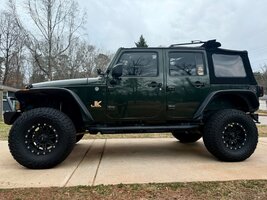Hi everyone,
2010 3.8L 170k miles
My gauge is reading that my engine isn’t reaching operating temps for a couple of weeks now. (It’ll be at like 160ish.) then one day I was idling at lunch and my water started boiling over and the temp got up to operating and a little more. Once I was in drive that issue went away but still ran cool.
So I replaced the thermostat and water pump but am still seeing this issue. I got home from work today and I could hear the water boiling in the radiator. and my fan doesn’t kick on while driving.
If I put the ac on the engine will create a weird feeling when sitting at a traffic life.
Ive dug into this some and haven’t seen anything similar. Does anyone have any thoughts on where to start or what could be wrong?
Thanks in advance!
2010 3.8L 170k miles
My gauge is reading that my engine isn’t reaching operating temps for a couple of weeks now. (It’ll be at like 160ish.) then one day I was idling at lunch and my water started boiling over and the temp got up to operating and a little more. Once I was in drive that issue went away but still ran cool.
So I replaced the thermostat and water pump but am still seeing this issue. I got home from work today and I could hear the water boiling in the radiator. and my fan doesn’t kick on while driving.
If I put the ac on the engine will create a weird feeling when sitting at a traffic life.
Ive dug into this some and haven’t seen anything similar. Does anyone have any thoughts on where to start or what could be wrong?
Thanks in advance!



